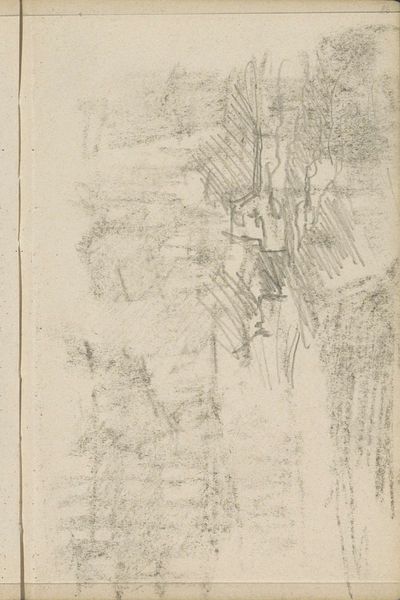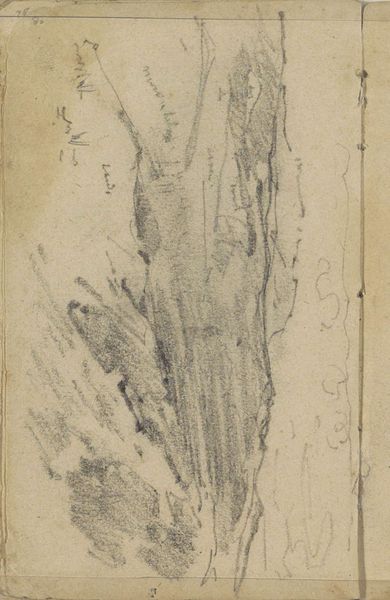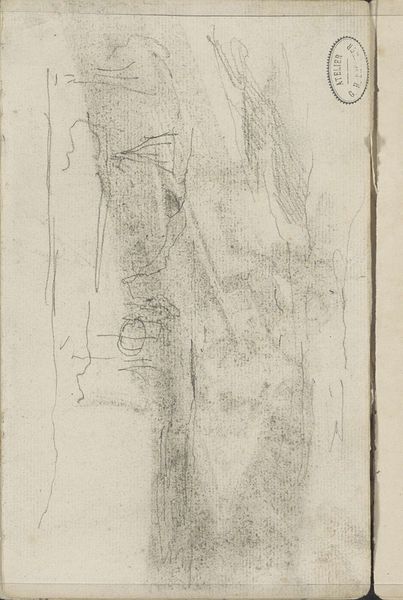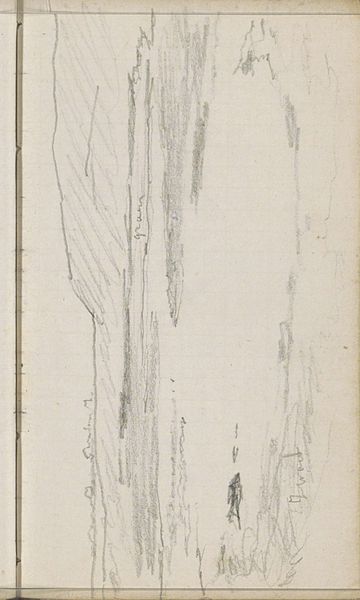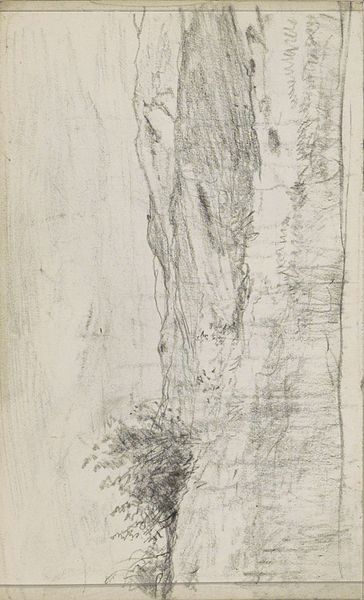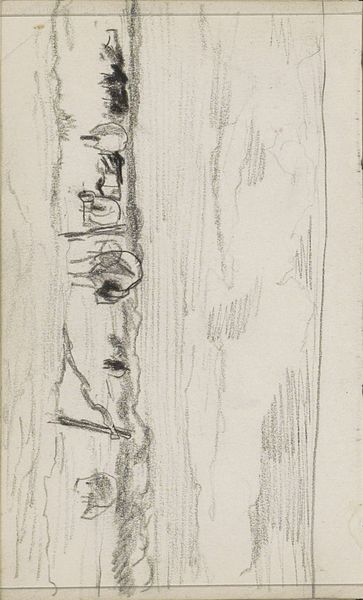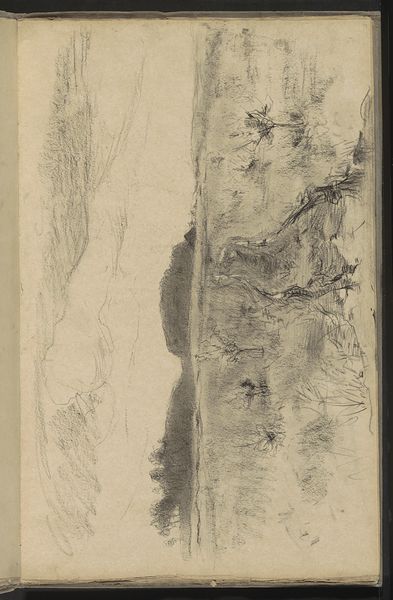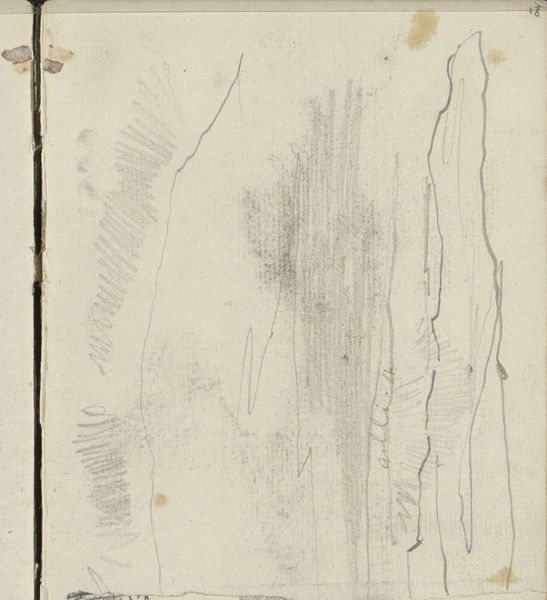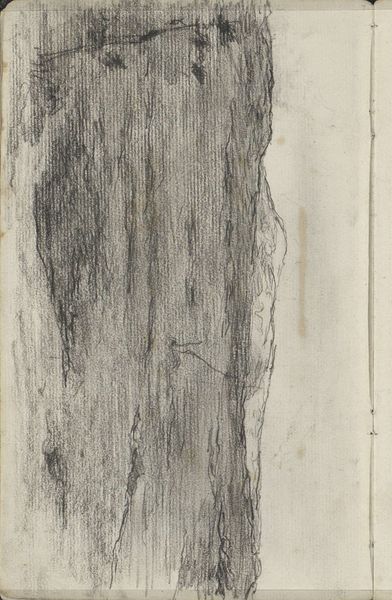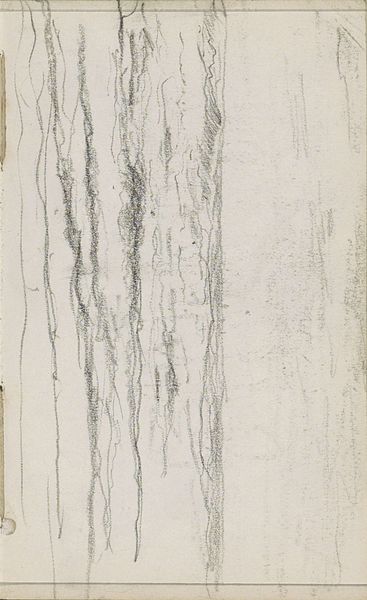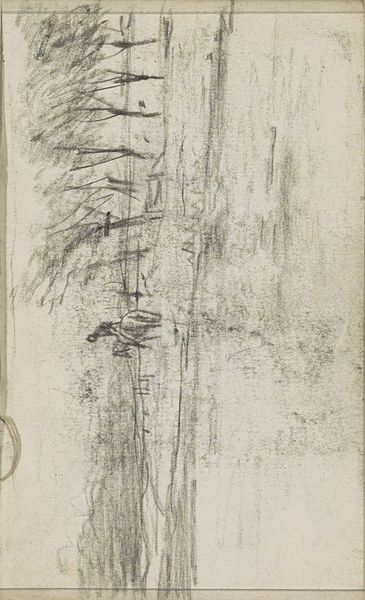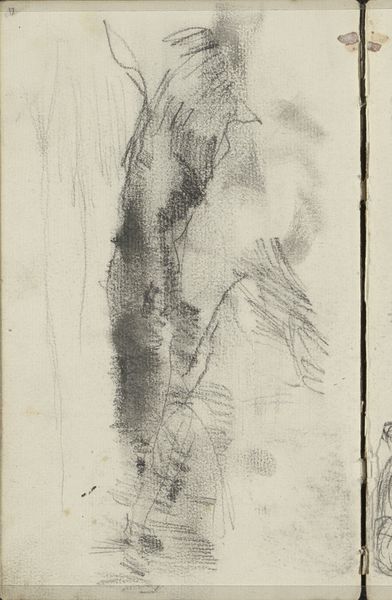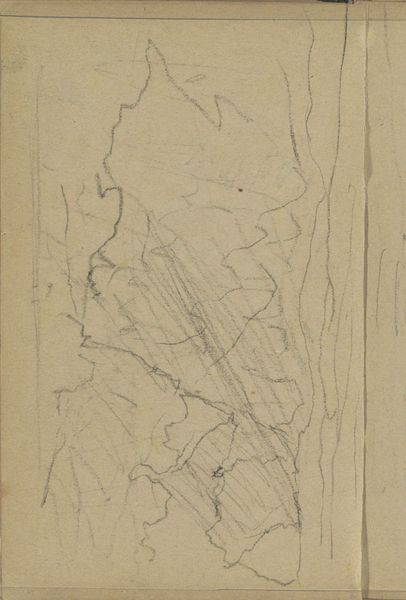
#
amateur sketch
#
toned paper
#
light pencil work
#
pencil sketch
#
incomplete sketchy
#
ink drawing experimentation
#
pen-ink sketch
#
rough sketch
#
watercolor
#
initial sketch
Copyright: Rijks Museum: Open Domain
Editor: We’re looking at “Vlak landschap met bomen,” or "Flat Landscape with Trees," by Anton Mauve, dating from 1848 to 1888. It's a quick sketch in pencil. It feels incredibly immediate, almost like a fleeting impression captured on paper. What can you tell us about it? Curator: This piece speaks volumes about the art market and artistic training in the late 19th century. Mauve, part of the Hague School, was deeply influenced by the Barbizon School's focus on painting en plein air. These rapid sketches weren't necessarily intended as finished works but served a vital role in artistic development. Consider the cultural context: a rising middle class, eager for art, fueled a market for both polished salon pieces and these more intimate, preparatory works. What do you think this sketch might reveal about Mauve's engagement with the landscape around The Hague? Editor: I guess it shows him thinking about composition and light, but more than that, perhaps this captures a personal experience with nature, even though it is unfinished. How might the art world's institutions influenced this drawing? Curator: Absolutely. Institutions like the Pulchri Studio, where artists gathered, exhibited, and critiqued each other’s work, would have profoundly shaped Mauve’s artistic decisions. He was thinking about audience reception, critical trends, and of course, the economic realities of selling artwork to galleries and collectors. These social and financial pressures played a large role in the aesthetics and creation. Also the Rijksmuseum, which exhibits the artwork now, bestows value to a sketch that otherwise might not have become part of the popular discourse around art. What does understanding the role of these societal pressures teach us about the artwork? Editor: So, viewing this as more than just a preliminary sketch, it’s also a product of and response to its time, shaped by market demands, institutional validation, and artist communities. I hadn't considered all the socio-political factors. Thanks for helping to unpack this! Curator: My pleasure. Recognizing these dynamics helps us understand art as not just aesthetic objects, but products embedded in their specific cultural and economic contexts.
Comments
No comments
Be the first to comment and join the conversation on the ultimate creative platform.
